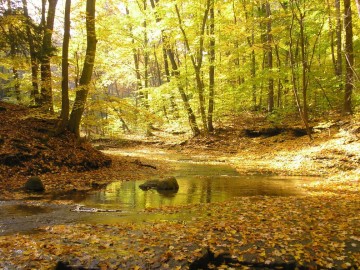
As part of the Erie River basin, the Chagrin River watershed includes thirty-two communities and three state parks across Ohio’s Cuyahoga, Geauga, Lake, and Portage districts. These watershed communities face higher risks for flooding, erosion, and poor water quality, which are heightened further by careless development and mismanagement of land. Local governments can protect their communities by enforcing standards set by the Environmental Protection Agency. However, it is in the hands of each community to enact further laws as necessary to ensure the safety of their unique natural environment.
For those unfamiliar with the latest in environmentally sustainable governance, this task can seem overwhelming. However, the Chagrin River Watershed Partners (CRWP) have developed model regulations that serve as guidelines for local governments in watershed communities who are interested in adopting the most effective policies for environmental protection. These model regulations provide detailed examples of restrictions, laws, and guidelines for day-to-day operations that government officials can choose to put into practice. CRWP provides interested local governments with tailor-made planning and guidance as they create official legislation and ongoing support for the implementation process. Here are the major areas that CRWP’s model regulations cover.
Conservation Development
Conservation development is based on the premise that urban growth should be carried out in a way that preserves natural open spaces and avoids urban sprawl. By carefully planning where and how to place buildings and strategizing the frequency and spread of parking lots, local governments can design their communities efficiently.
Reducing Erosion, Sedimentation, and Flood Damage
Erosion occurs when the top layers of soil containing important mineral sediments are washed away. Erosion can lead to agricultural infertility and severe flooding. However, if sediments build up in other locations, the effects can be equally harmful to marine life, agricultural output, and the quality of local water sources. Proper management, regulation, and inspection of business and homeowner properties can drastically reduce the risk of erosion and flooding.
Riparian and Wetland Setbacks
Riparian areas and Wetlands are uniquely vegetated environments based around natural bodies of water. By regulating how close buildings and human dwellings can be built to wetlands and riparian areas, local governments can allow the environment to naturally regulate water flow, storm-water drain-off, and water purification.
Managing Storm Water Removal and Waste Disposal
Effective management of waste disposal and policing of the illicit discharge of toxic substances into local bodies of water, combined with efficient methods for disposal of storm water, can protect the water that we drink and the communities we live in. Government regulation and inspection combined with individual accountability can make huge strides in protecting Chagrin River watershed communities from pollution.
By designing policies based on the model regulations made available on the CRWP’s website, local communities and governments in the Chagrin River Watershed and beyond can learn how to better protect their environment as part of an ongoing global movement towards environmental sustainability.

